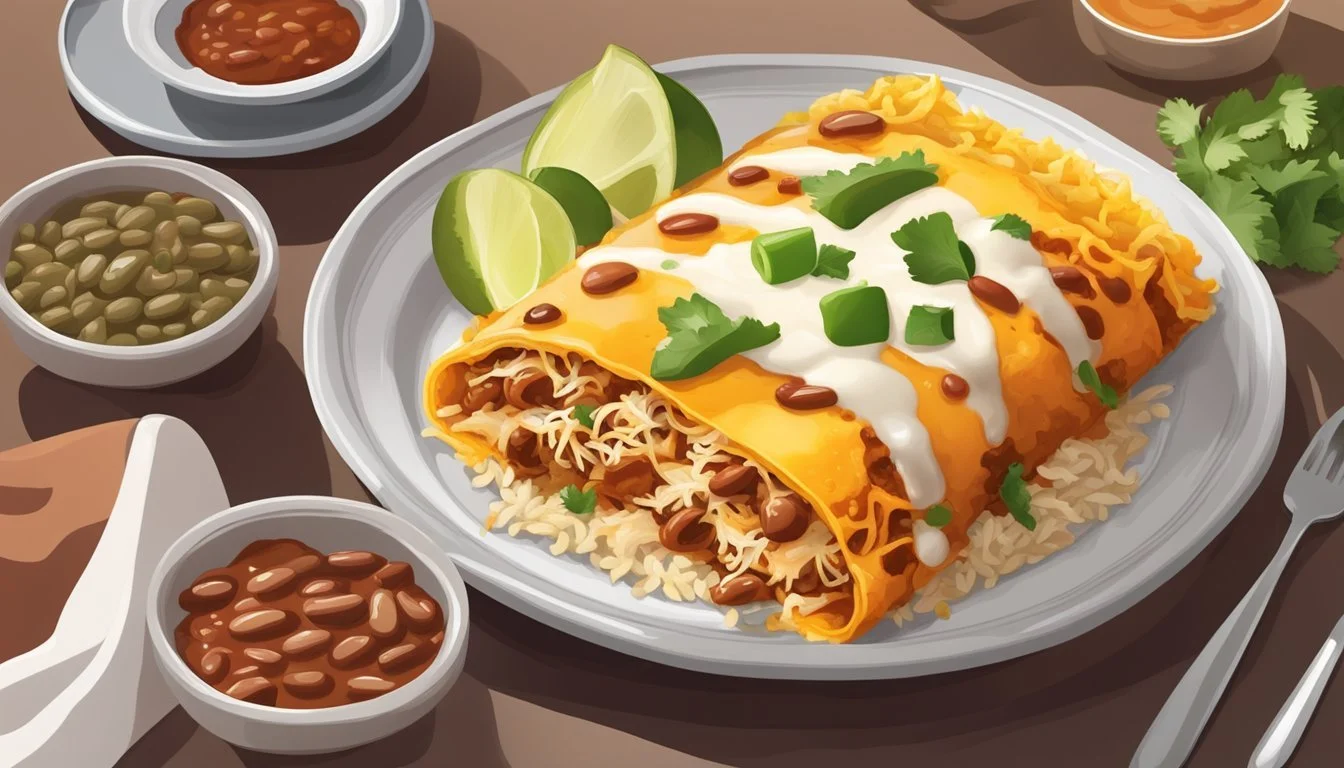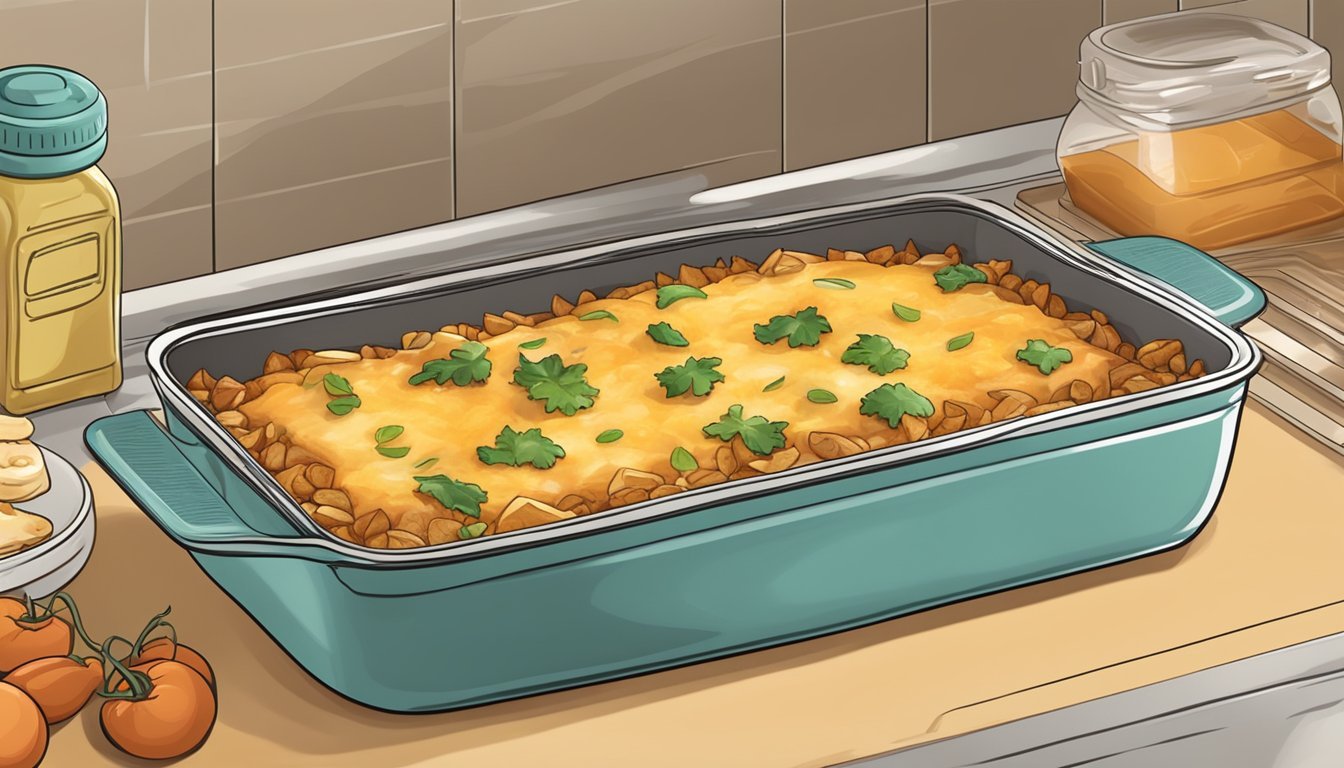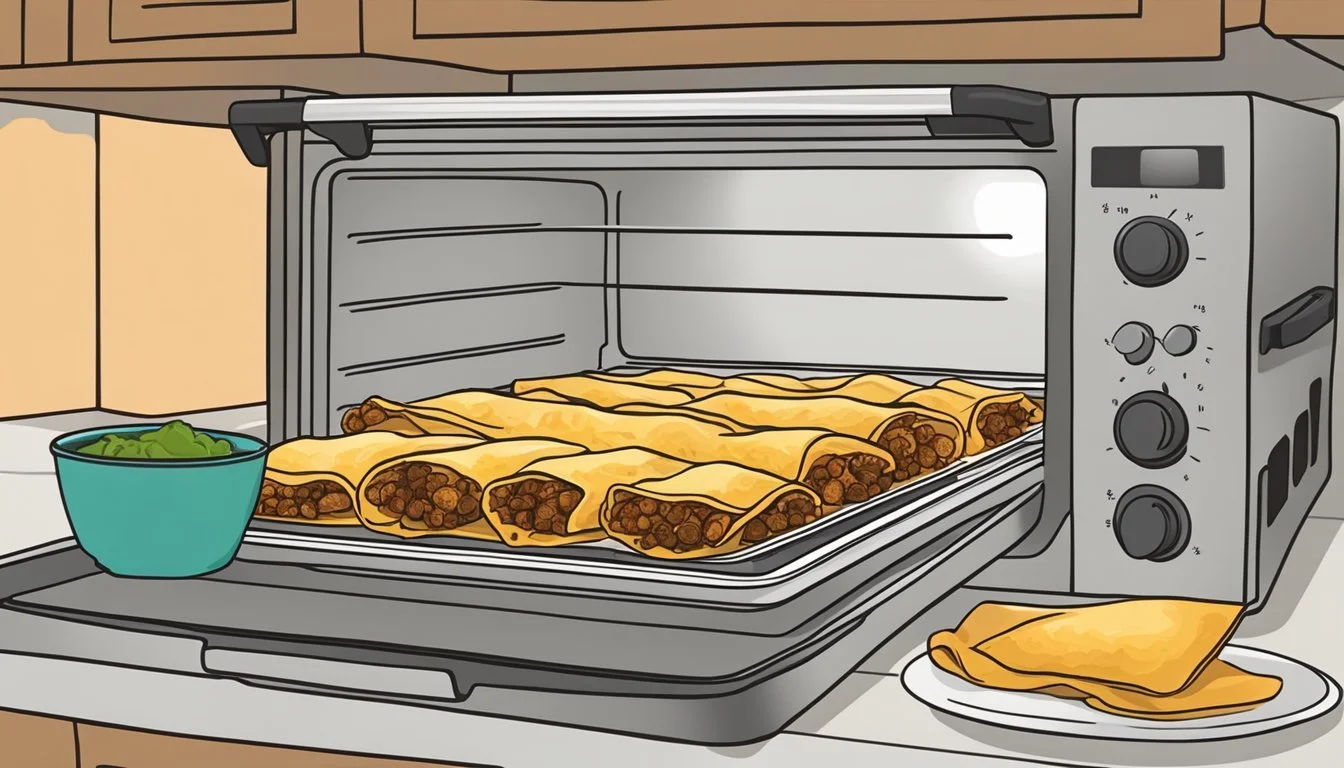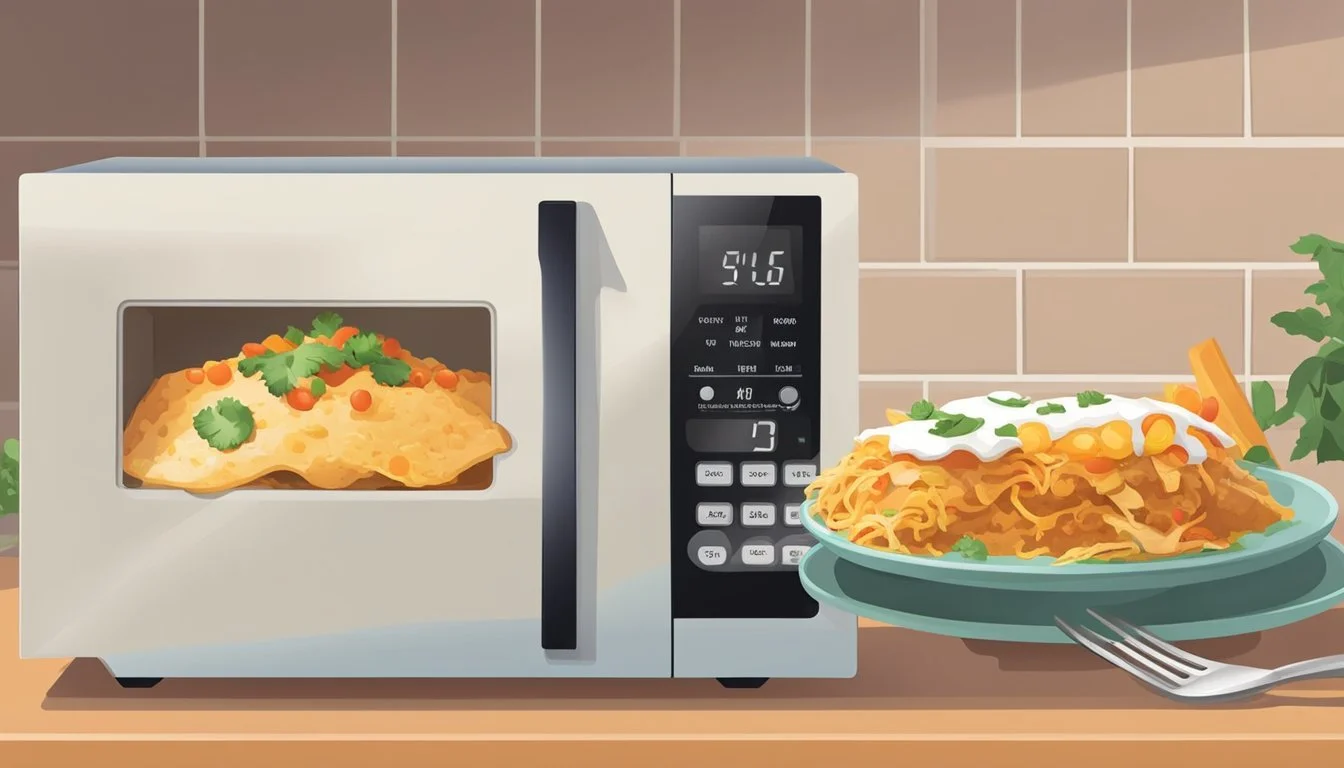How to Reheat Evol Chicken Enchilada Bake for Perfect Texture
Reheating the Evol Chicken Enchilada Bake can be a straightforward task when done correctly, ensuring the meal retains its delightful flavors and textures. To achieve the best results, reheat the enchilada bake in the oven to preserve its crispiness and rich, cheesy goodness. This method helps maintain the integrity of the corn tortillas and the overall savory profile of the dish.
For those in a hurry, the microwave offers a quicker alternative. While not as perfect as the oven, it still enables a warm and satisfying meal, especially when care is taken to cover the dish to maintain moisture. The convenience of the microwave makes it a go-to option for busy days when a fast, yet flavorful, meal is needed.
Reheating with an air fryer is another method that strikes a balance between speed and maintaining texture. This approach can help restore some of the original crispiness of the tortillas while ensuring the enchilada bake heats evenly. Each method carries its benefits, making it easy to enjoy the Evol Chicken Enchilada Bake just as deliciously as the first time.
Understanding the Basics of Enchiladas
To appreciate a Chicken Enchilada Bake, it’s vital to grasp its essential components and recognize the significance of proper reheating. These elements directly affect texture, flavor, and overall enjoyment of this beloved Tex-Mex dish.
Components of a Chicken Enchilada Bake
A Chicken Enchilada Bake typically includes chicken, cheese, tortillas, and enchilada sauce. Shredded chicken creates a hearty base, while melty cheese binds everything together. Corn or flour tortillas wrap the filling, adding texture and maintaining structure.
The enchilada sauce, often made from tomatoes and spices, imparts a rich, tangy flavor. Additional ingredients such as beans, corn, and peppers can complement the chicken and cheese filling, enhancing both taste and texture.
Understanding these core components emphasizes the dish's versatility and why each plays a crucial role in delivering a satisfying meal.
Importance of Proper Reheating
Proper reheating is essential to retain the dish's quality. Microwave reheating can be quick but may require steps like rotating or covering to ensure even heating. Cutting the bake into pieces can improve heat distribution.
Oven reheating at 350°F for about 15-20 minutes ensures even heat through the dish, preserving the texture of tortillas and filling. Covering with foil helps retain moisture, preventing the enchiladas from drying out.
For added crispiness, uncovering the dish for the last few minutes in the oven works well. Each reheating method has its benefits, ensuring the enchiladas remain delicious and enjoyable.
Preparatory Steps Before Reheating
Preparing Evol Chicken Enchilada Bake correctly is essential for achieving the best taste and texture when reheating. Key steps involve thawing if the enchiladas are frozen and ensuring the reheating setup is suitable for the chosen method, whether it's the microwave or oven.
Thawing Frozen Enchiladas
Frozen enchiladas should be thawed in the refrigerator for best results. Place the enchiladas on a plate to catch any condensation or leakage. Allow them to thaw slowly over 24 hours to maintain the quality.
If time is limited, enchiladas can be defrosted using the microwave. Set the microwave to the defrost setting and place the enchiladas on a microwave-safe plate. Check and rotate them at intervals to ensure even thawing.
Avoid thawing at room temperature to prevent bacterial growth. Once thawed, the enchiladas should be reheated immediately to preserve food safety and flavor.
Setting Up the Reheating Station
Before reheating, remove any aluminum foil or plastic wrap from the enchiladas. For the oven, place them in an oven-safe dish or casserole dish and cover with parchment paper or foil to retain moisture. Preheat the oven to 350°F (175°C) for consistent heating.
For microwave reheating, use a microwave-safe plate and cover the enchiladas with a microwave-safe cover or vented plastic wrap. This prevents drying out while reheating.
Gather necessary items such as potholders, timers, and utensils. This ensures a smooth process and helps avoid interruptions once reheating begins. These preparatory steps are crucial for achieving a warm, flavorful meal.
Reheating Enchiladas in the Oven
Reheating Evol Chicken Enchilada Bake in the oven is an effective way to maintain its taste and texture. The key points to focus on are preheating the oven, the reheating process itself, and ensuring the enchiladas stay moist.
Preheating and Preparation
Before starting, preheat the oven to 350°F (175°C). This temperature is ideal for reheating without drying out the enchiladas. While the oven is preheating, prepare a baking dish by lightly greasing it with oil or cooking spray. If your enchiladas are frozen, allow them to thaw in the refrigerator beforehand.
Using aluminum foil to cover the baking dish can help retain moisture. Make sure the oven rack is in the center position to ensure even heating.
Oven Reheating Process
Once the oven reaches 350°F, place the enchiladas in the preheated oven. For refrigerated enchiladas, bake for approximately 20-25 minutes. If they were previously frozen, extend the cooking time to up to 30 minutes.
Check periodically to avoid overcooking. The enchiladas should be heated thoroughly but not dried out. Ensure the dish reaches an internal temperature of at least 165°F (74°C) for safe consumption.
Ensuring Moisture Retention
Maintaining moisture is crucial. Covering the baking dish with aluminum foil helps retain steam, preventing the enchiladas from becoming too dry. If you find the enchiladas drying out towards the end, you can add a small amount of enchilada sauce or water before resealing the foil.
Another tip is to use a small oven-safe dish filled with water placed in the oven alongside the baking dish. This can create a more humid environment inside the oven, aiding in moisture retention.
Reheating Enchiladas in a Microwave
For convenience and speed, the microwave is a practical option for reheating Evol Chicken Enchilada Bake. Proper setup and technique will ensure even heating without sacrificing flavor.
Microwave Setup
First, place the enchiladas on a microwave-safe plate. It is essential to leave space between each piece to avoid uneven heating. A crowded plate can result in cold spots, which is undesirable.
Cover the enchiladas loosely with a microwavable lid or vented plastic wrap. This helps retain moisture and prevents the filling from drying out. Venting also allows steam to escape, reducing the risk of overheating.
Microwave Reheating Technique
Microwave on high for an initial 2 minutes. Check the enchiladas by piercing them with a fork. If they are not hot enough, continue reheating in 1-minute increments. Rotate the plate midway through the reheating process for even heat distribution.
For best results, consider adding a little extra sauce or cheese before reheating. This helps to enhance the flavor and moistness. Ensure the internal temperature reaches 165°F (74°C) to guarantee the enchiladas are thoroughly heated and safe to eat.
Alternative Reheating Methods
When reheating Evol Chicken Enchilada Bake, there are several effective methods you can use. These include using a skillet, toaster oven, or air fryer to ensure the enchiladas are heated thoroughly while maintaining their flavor and texture.
Using a Skillet
To reheat Evol Chicken Enchilada Bake in a skillet, start by heating a lightly greased skillet over medium-high heat. Place the portioned enchilada bake into the skillet with the cheese side up. Allow it to heat for approximately 3-5 minutes.
Add a splash of water to the skillet and cover it with a lid to steam the enchiladas, which helps melt the cheese and reheat evenly. This method creates a pleasantly crisp bottom while making sure the dish is heated throughout. Check periodically to avoid overcooking.
The Toaster Oven Approach
Using a toaster oven is another convenient way to reheat leftovers. Start by preheating the toaster oven to 350°F. Place the Evol Chicken Enchilada Bake on an oven-safe dish or tray. Cover it with aluminum foil to prevent it from drying out.
Heat the dish for about 15-20 minutes, making sure to check midway and rotate if necessary for even reheating. For a crisper top, remove the foil for the last 5 minutes of reheating. This method ensures the enchiladas are warmed through while preserving their texture.
Utilizing an Air Fryer
An air fryer offers a quick and efficient reheating option. Begin by preheating the air fryer to 350°F. Place the enchilada bake in the air fryer basket without overcrowding. If reheating multiple servings, consider doing so in batches to ensure even heating.
Reheat for 7-10 minutes, checking halfway through and shaking the basket lightly to promote even heating. The powerful convection heat will give the enchiladas a nice crispy exterior while ensuring the inside is hot. This method is particularly useful when you want a quick and crispy reheating solution.
Serving and Accompaniments
Evol Chicken Enchilada Bake makes for a delightful meal when properly presented and paired with the right side dishes. For the best experience, focus on presentation and choose side dishes that complement the flavors.
Presentation Tips
Presenting the Evol Chicken Enchilada Bake attractively can enhance the dining experience.
Use a wide, shallow dish to serve the enchilada bake, allowing easy access to each portion. Garnish with a sprinkle of fresh cilantro or a drizzle of green enchilada sauce to add visual appeal and extra flavor. For added texture and color, top with shredded cheese or a dollop of guacamole.
When plating, place each portion in the center and surround it with colorful sides. Multi-color tortilla chips can add a vibrant contrast. Utilizing Mexican-themed tableware can also enhance the ambience.
Suitable Side Dishes
Accompanying the enchilada bake with complementary side dishes can round out the meal.
Rice: Serve with Mexican or cilantro-lime rice for a hearty, flavorful addition.
Beans: Refried beans or black beans offer a creamy texture that pairs well with the enchiladas.
Guacamole: Fresh guacamole can provide a creamy, tangy counterpoint.
Salad: A crisp green salad with a light citrus dressing helps balance the richness of the enchilada bake.
Salsa and Chips: Offer a variety of salsas and multi-colored tortilla chips for added crunch and zing.
Combining these elements ensures a balanced meal that's delightful in both taste and presentation.
Storing Leftover Enchiladas
Correctly storing leftover enchiladas ensures they remain tasty and safe to eat. Proper cooling and wrapping techniques, along with smart choices between freezer and refrigerator storage, are key.
Cooling and Wrapping Techniques
After cooking, it is crucial to let enchiladas cool before storing them. Rapid cooling minimizes bacterial growth. Once cooled, wrap each portion individually to maintain quality and taste.
Using plastic wrap or aluminum foil helps prevent moisture loss and flavor contamination. Alternatively, store portions in airtight containers for added protection. Labeling each package with the date helps track freshness.
Key steps:
Allow to cool to room temperature.
Wrap individually in plastic wrap or foil.
Place in airtight containers.
Label with the date of storage.
Freezer vs Refrigerator Storage
Refrigerator Storage: Store enchiladas in the refrigerator if they will be consumed within 3-4 days. Use airtight containers or wrap tightly in plastic wrap/foil to prevent drying out.
Freezer Storage: For longer storage, freezing is optimal. Properly wrapped enchiladas can last up to 3 months in the freezer. Freezing them in portions simplifies reheating. Ensure a tight seal using a combination of plastic wrap followed by aluminum foil, or use vacuum-sealed bags for better results.
Quick Guide:
Refrigerator: Good for up to 4 days.
Freezer: Best for up to 3 months.
Always label with storage date and contents.
Storing enchiladas correctly keeps them fresh and delicious for future meals.
Tips for Best Reheating Results
When reheating Evol Chicken Enchilada Bake, consider these tips to ensure optimal results.
Use an Oven for Even Heating
The oven is often the best choice to reheat enchiladas for even warmth and texture. Preheat the oven to 350°F (175°C). Place the enchiladas in an oven-safe dish, cover with aluminum foil to prevent drying out, and bake for 20-25 minutes until heated through.
Microwave for Quick Convenience
For quicker reheating, the microwave can be effective, particularly for individual servings. Place the enchiladas on a microwave-safe plate, cover slightly with a microwave-safe lid or a damp paper towel to retain moisture. Heat on medium power in increments of 1-2 minutes, checking frequently for even heating.
Maintain Moisture
Maintaining moisture is crucial to avoid dry or rubbery enchiladas. Adding a splash of water or broth to the dish before reheating can help retain moisture. Covering the dish with foil or a lid is also recommended to trap steam and keep the enchiladas moist.
Avoid Overheating
Overheating can cause the enchiladas to become dry or lose texture. Check the enchiladas frequently during reheating, especially in the microwave. Aim for a temperature of around 165°F (74°C) to ensure they are hot enough without overcooking.
Reheating Frozen Enchiladas
If reheating frozen enchiladas, allow them to thaw in the refrigerator overnight for best results. Preheat the oven and follow the same baking instructions as for refrigerated enchiladas, but expect to add an additional 10-15 minutes to the bake time.
Using these methods will help achieve warm, flavorful, and perfectly textured Evol Chicken Enchilada Bake every time.








